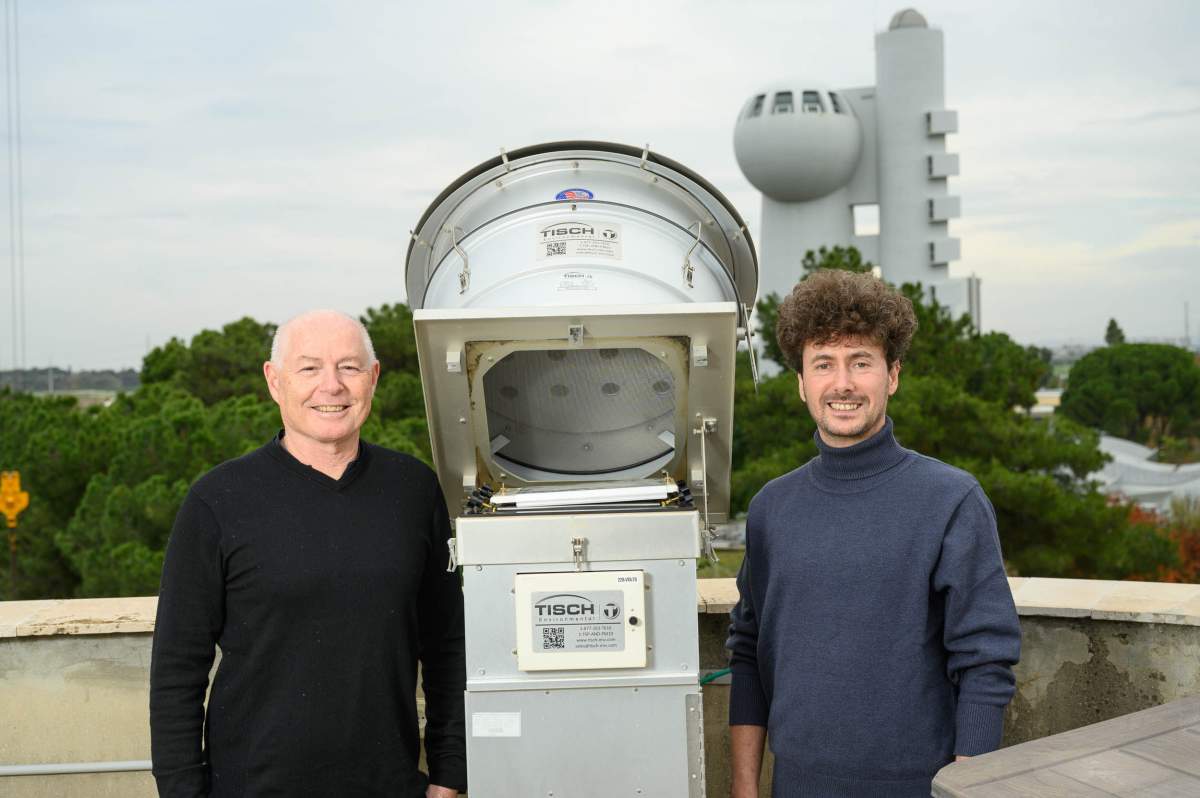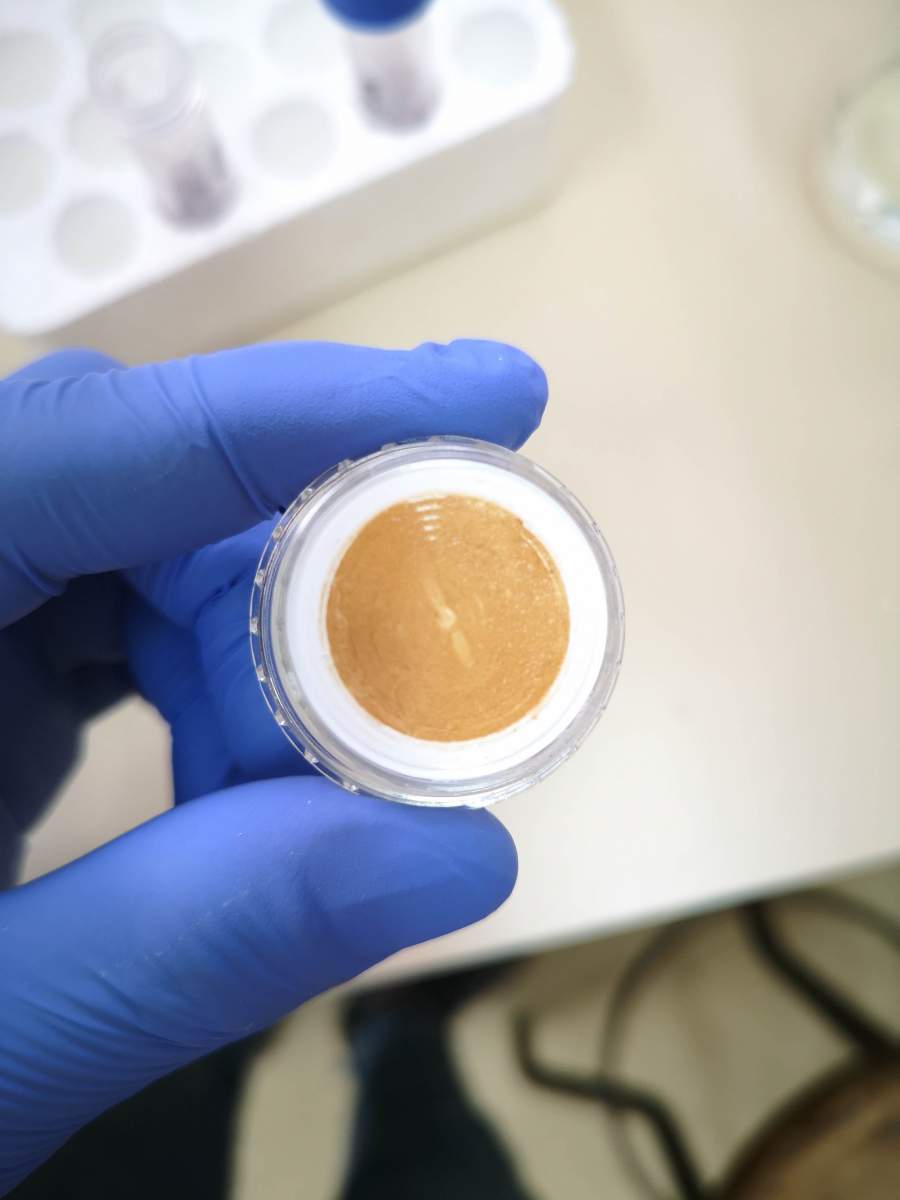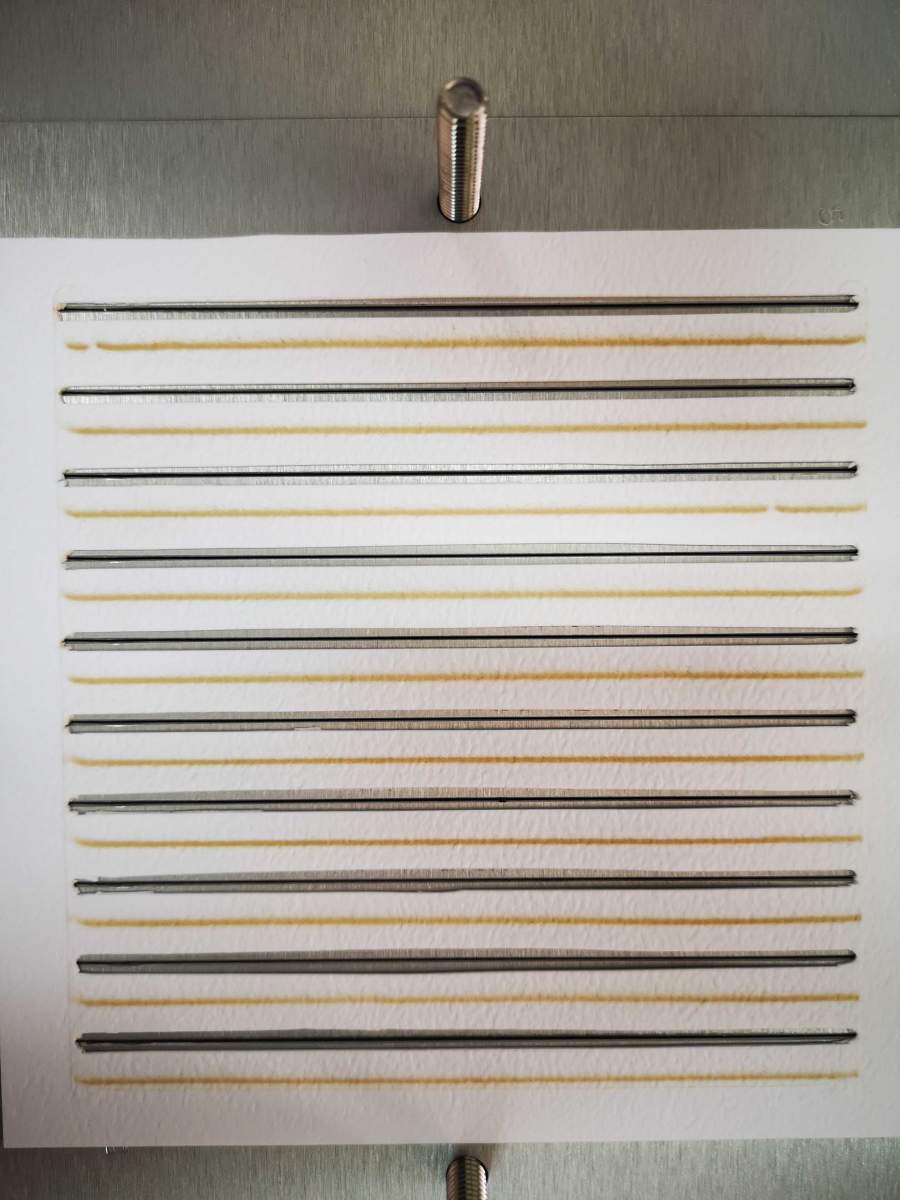Because of their minute size, microorganisms travel the world effortlessly. Winds transport them, perched on specs of dust and other airborne particles, across continents and oceans. Researchers at the Weizmann Institute of Science and elsewhere have documented this movement consistently through gene sequencing of samples extracted from air.
But such studies left open a crucial question: Are those microorganisms still able to function when they land - possibly affecting humans, animals and plants, causing diseases or activating biochemical pathways - after circulating for days at high altitudes where humidity and temperatures are low and ultraviolet radiation is strong?

A new study in Prof. Yinon Rudich's lab at the Weizmann Institute of Science's Earth and Planetary Sciences Department shows that some of the inbound bacteria are potentially alive indeed and can thrive when they descend, a fact that may have implications for public health and agriculture.
"Going outside in a dust storm is bad for you," says Rudich. "Dust storms may increase because of climate change, so knowing that they contain living bacteria could, in the future, lead to specific health warnings ahead of such events. For example, individuals with compromised immune systems or farmers raising livestock could limit their exposure or take other precautions."
Israel and the Eastern Mediterranean, a major crossroads for migrations of humans since the dawn of civilization, is also a region that is particularly suitable for studying the aerial travels of microorganisms by desert dust. Air masses from the Sahara, the Arabian Peninsula, the Iraq-Syria border and Europe converge there, carrying microorganisms with them on the wind.
In the new study, Burak Adnan Erkorkmaz, a PhD student in Rudich's lab, led experiments in which the scientists first sampled atmospheric air during and in between dust storms, using air samplers installed on the roof of their lab at the Weizmann Institute. They ran the collected samples through filters of different sizes and tested them for bacterial DNA.

Yet DNA is a resilient molecule that often remains intact after its owner expires. So the researchers went on to test their samples also for RNA - short-lived molecules transcribed from the cellular DNA to transfer its information further. A high RNA to DNA ratio would show ongoing or very recent genetic activity - in other words, signs of actual life.
"We assumed that if we detect more RNA than DNA for specific bacteria, this would indicate that the bacteria in question are either alive or were alive until very recently," says Erkorkmaz. He focused on ribosomal DNA and an RNA component called 16S, which is unique for each type of bacteria and is therefore used to identify bacterial species.
Erkorkmaz and Dr. Daniela Gat, also from Rudich's lab, found plenty of different kinds of bacteria in their samples, about 5,000 in total. Following the RNA sequencing, approximately 10 percent of all the bacteria were deemed to be alive.
Some of these bacteria are known pathogens (disease-causing bacteria) in humans, animals and plants. One genus identified in the samples, Pseudomonas, has species that can induce infections in both humans and livestock. Others are important players in plant processes and are not necessarily pathogenic. Sphingomonas, for example, is a genus with species that play a role in the fermentation of wine. One genus that the researchers encountered, Methylorubrum, includes species that affect how strawberries mature and taste.
The study also showed that larger particles carry more abundant and diverse bacteria than smaller particles. This could affect how scientists assess risk levels from dust storms, since current assessments rate smaller particles as more dangerous because they penetrate deeper into the lungs.

The higher bacterial concentration in large particles also affords a clue as to how they survive their perilous journey. It is likely that they attach to mineral dust or clump together in aggregates that protect them from the elements - similarly to how bacteria in other hostile environments become coated by what are called biofilms. Indeed, Erkorkmaz found that the bacteria displaying a high likelihood of being alive were the ones that are known to form biofilms in nature.
The research team identified the origin of the bacteria by analyzing wind trajectories of up to seven-days during a dust storm, including by cross referencing satellite images of dust storms on the move with the dates on which the team collected their samples. The bacterial composition of the samples differed according to the dust's place of origin.
Unlike most people, who seek to avoid dust storms, Erkorkmaz spent months chasing these weather events through forecasts. Unfortunately for him, many dust storms during the research period happened to hit on weekends, sending him up to the roof on would-be days off, often at odd hours of the night.
But the view was not bad and, more important, the investment paid off, says Erkorkmaz. The findings, he explains, "shed new light on the kinds of ecological impacts that wind-blown bacteria can produce."

Science Numbers
Dust storms can triple the number of bacterial types in the air. In regular weather conditions, the scientists found between 250 and 750 bacteria types in a sample comprising 10,000 to 15,000 micrograms of dust, filtered over 6 hours from about 400 m3 of air (roughly the volume of a two-bedroom apartment). During even a mild dust storm, the research team collected between 25,000 and 50,000 micrograms of dust, and the number of bacteria types jumped to between 750 and 2,000 per sample. The average bacterial cell concentration soared during dust storms to between 3,000 and 5,500 bacterial cells per m3, which is at least 10 times the concentration recorded during regular conditions.
Prof. Yinon Rudich is head of the Ilse Katz Institute for Material Sciences and Magnetic Resonance Research, the Helen and Martin Kimmel Institute for Magnetic Resonance Research and the Nancy and Stephen Grand Research Center for Sensors and Security. His research is also supported by the Henry Chanoch Krenter Institute for Biomedical Imaging and Genomics and the Dr. Barry Sherman Institute for Medicinal Chemistry.






